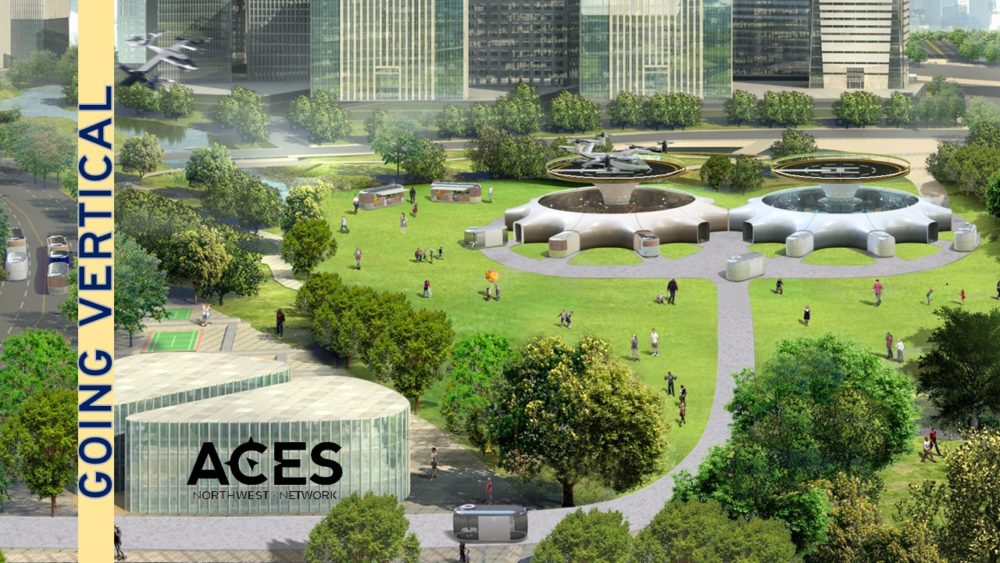
Going Vertical: Air Mobility in the PNW with ACES Northwest Network

Facts About Seattle’s Tunnel Choice
Frequently Asked Questions About Seattle's Tunnel Choice from Cascadia Center for Regional DevelopmentCongress Begins Grappling With New Surface Transportation Funding Bill
Cascadia Rail Week In The News
Deep Bored Tunnel Bill Is Signed Into Law – News Round-up
High Speed Rail Can Transform Cascadia
High speed rail and improved inter-city freight rail infrastructure can better unite the Cascadia region, from British Columbia to Oregon - while reducing highway congestion and greenhouse gas emissions, and boosting the economy and tourism. We'll highlight the transformational possibilities at the Cascadia Rail Partnership Conference, May 27-29 in Seattle and Portland. Don't miss it.
North American rail is at center stage on the transportation agenda. Eight billion dollars in U.S. stimulus money is kicking off a new series of improvements to the nation's rail systems. Beneficiaries could include the Amtrak Cascades passenger rail line which runs from Portland, Oregon to Seattle, and north to Vancouver, B.C.
Since 1994, Washington, Oregon, the federal government, regional agencies and railroads have made capital and operating investments of about $1 billion in the Amtrak Cascades line. Now - with President Obama prioritizing high speed rail - is the time to build on that investment. The visioning that precedes the hard work of securing full funding for passenger and freight rail improvements has begun anew. Vancouver Sun economic affairs columnist Miro Cernetig writes that the opportunity should be seized to strengthen U.S.-Canada links via improved Northwest rail service.
Additional information:
"Ottawa's Lack Of Vision May Derail Our High-Speed Rail Dreams," Vancouver Sun, 5/18/09
"Tourism Leaders Steaming Over Train Holdup," The Province, 5/15/09
"High Speed Rail: Region Should Climb Aboard," Everett Herald, 5/15/09
"Is Cascadia's Train Coming In?" Crosscut, 5/12/09
"Hope For High Speed Rail On the West Coast," McClatchy News/Tacoma News Tribune, 5/10/09
"Planes, Trains, And...Two Vital Projects To Relieve Air Traffic Congestion," Washington Post editorial, 5/6/09
"Megaregions And High Speed Rail," Richard Florida, Creative Class Exchange blog, The Atlantic, 5/4/09
"Mayor Backs Plan For High Speed Rail From Oregon To B.C.," The Province, 4/26/09
"Next Stop: A Faster Train From Seattle To Portland," Tacoma News Tribune, 4/21/09
"Obama's Rail Plan Not So High Speed," The Oregonian, 4/21/09
"Spain's Bullet Train Changes Nation, And Fast," Wall Street Journal, 4/20/09
"Rail Advocates Laud Federal Announcement," Seattle PI.com, 4/16/09
"High Speed Rail Gets $8 Billion Boost; Northwest Could Benefit," Associated Press/Seattle Times, 4/16/09
Rail articles archive, Cascadia Prospectus blog, 2007-2009
"Vision For High Speed Rail In America: Strategic Investment Plan," Federal Railway Administration, USDOT, 4/09
Amtrak Cascades Long Range Plan, Washington State Department Of Transportation, 2006
Statewide Rail Capacity and System Needs Study," Washington State Transportation Commission, 2006
(More)
House OKs SR 99 Tunnel – News & Commentary
Deep Bored Tunnel Chosen: Jan. 13-16 Media & Govt. Links
Deep Bored Tunnel To Replace Alaskan Way Viaduct – Latest Information
Beyond Oil: Transforming Transportation
Fifth Annual TransTech ConferenceEastside TRailway Forum Recap
Subscribe To Newsletter
City, County, Port To Run Year-Long Test Of PHEVs
Transportation Washington February 2006 Newsletter
Leadership Drought, Not Water Shortage in Northwest
TWG Final Report
Civic Leadership Group Calls for Prioritizing Viaduct and Evergreen Point Bridge
